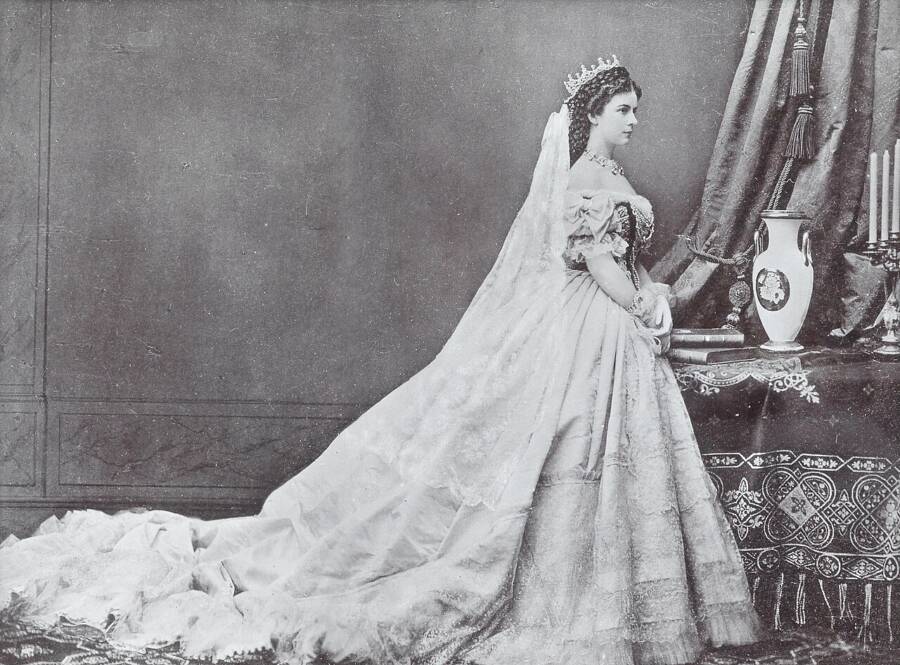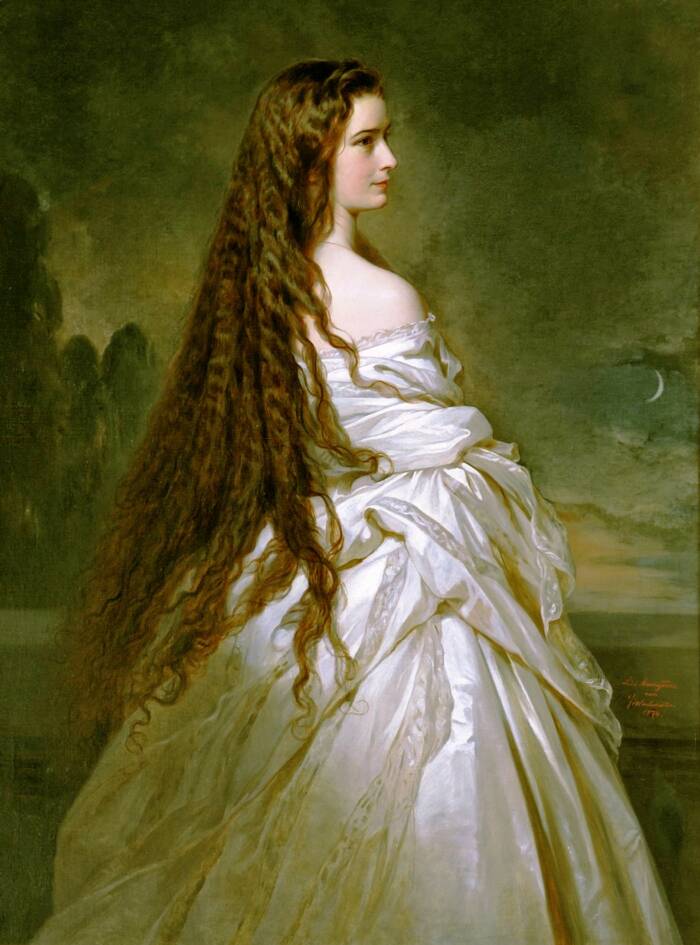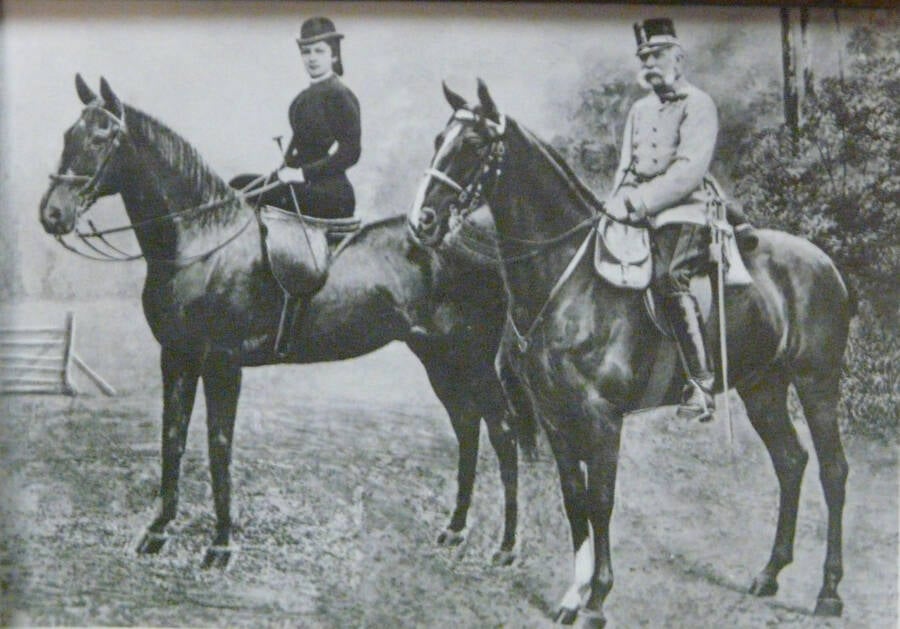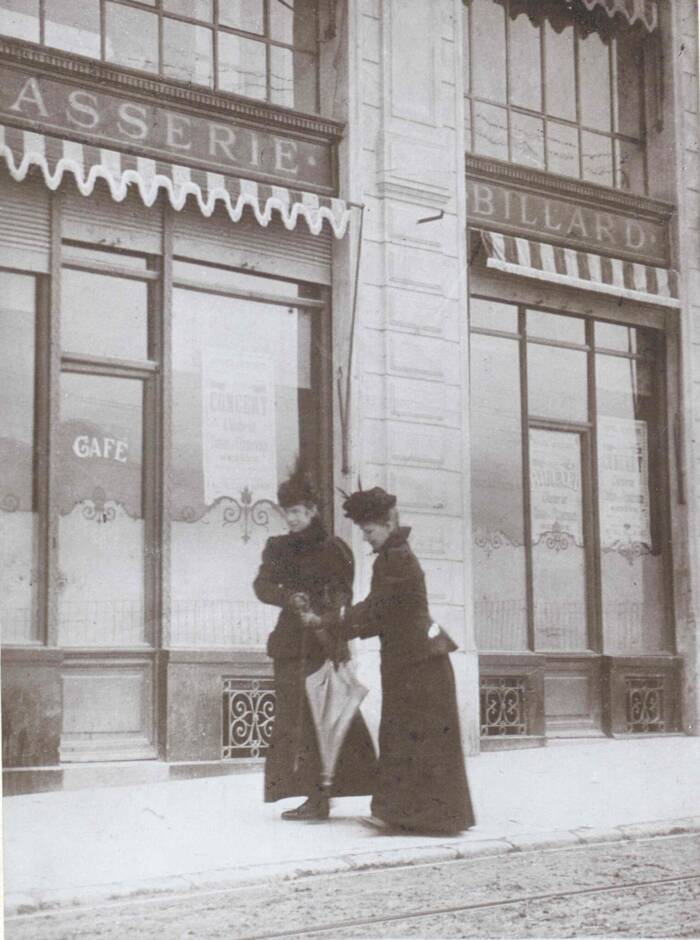The wife of Emperor Franz Joseph I, Elisabeth of Austria was known for her beauty and for her frequent refusal to be seen in public before she was murdered by an Italian anarchist in 1898.

Wikimedia CommonsThough she was celebrated for her style and beauty, Empress Elisabeth of Austria felt stifled by royal life.
Empress Elisabeth of Austria lived a rich but tragic life. Obsessed with her weight and appearance, Elisabeth used corsets to achieve a 16-inch waist — even after four pregnancies. She also refused to sit for portraits or photos after she turned 30, in an effort to preserve her youth.
Though she was widely admired for her beauty and style in the mid-19th century, she struggled to find true happiness. This was clear in both contemporary accounts and the royal’s own personal poetry.
“Once I was so young and rich/In love of life and hope;/I thought nothing could match my strength,” Empress Elisabeth once wrote. “The whole world was open to me./I loved, I lived,/I wandered through the world;/But never reached what I strove for.—/I deceived and was deceived.”
Sadly, she continued to be known for her melancholy nature up until she was brutally assassinated by an Italian anarchist at the age of 60.
How Elisabeth Went From Duchess To Empress
The daughter of a duke and a princess, Elisabeth entered the world as a duchess in 1837. Growing up in Bavaria, the young girl climbed mountains, rode horses, and played with the children of local farmers.
As one of eight children — and not the eldest daughter — Elisabeth did not have to follow the strictest rules of the royal court. She flourished in the countryside, surrounded by friends who called her Sisi (or Sissi).
That would change in 1853. At 15 years old, Elisabeth traveled to Austria with her mother and her older sister Helene. Helene was expected to become engaged to Franz Joseph I, who was Austria’s Habsburg emperor (and he was also the girls’ first cousin). The union would transform Helene into an empress, while Elisabeth would simply return to Bavaria.
But then, Franz Joseph I saw Elisabeth. “He beamed, and you know how his face can beam when he is happy,” wrote the emperor’s mother. “The dear little one did not suspect the deep impression she had made on Franzi.”

Wikimedia CommonsElisabeth was reportedly reluctant to hold her new royal title as an empress.
Suddenly, Helene had been replaced with Elisabeth, who found herself the new empress of Austria at just 16 years old. Her new husband Franz Joseph I was 23 years old at the time that they got married in 1854.
The young empress soon became famous for her beauty and style, but she would eventually also be known for her frequent refusal to be seen.
Perhaps that was her way of taking back some sense of control in her life. By her 21st birthday, Empress Elisabeth of Austria had already given birth to three children. Tragically, one of Elisabeth’s daughters, Sophie, died when she was just two years old, likely from typhoid fever.
While Elisabeth’s husband adored her, he also engaged in extramarital affairs. The emperor was thrilled when Elisabeth eventually gave birth to a male heir named Rudolf, but he often ignored his wife’s attempts to discuss politics, especially since her views were quite different from his.
Despite her wealth, Elisabeth was miserable. While the public clamored for a glimpse of their beloved empress, Sisi reportedly longed for the days that she had more freedom in Bavaria. She began avoiding public appearances, which only made her outings more exciting to the people.
“It is the Empress who attracts them all,” Elisabeth’s mother-in-law wrote of the crowds who gathered in the palace’s courtyard in the hopes of seeing the increasingly reclusive empress. “For she is their joy, their idol.”
Sisi’s Obsession With Beauty

Royal Collection of the United KingdomElisabeth was obsessed with her hair, growing it to impressive lengths.
Often praised for her beauty and figure, Empress Elisabeth of Austria grew obsessed with maintaining her youth. “Children are the curse of their mothers because they destroy their beauty,” Elisabeth purportedly complained, “the sole and unique gift that God gives us.”
At 30, she declared she would have no more children — nor would she sit for photos or portraits. History would remember her as young and beautiful.
Maintaining her looks came with numerous challenges. At certain points, Elisabeth had to defend herself against rumors that she was unfaithful to the emperor. “I was… certainly not raised to be an empress, and I know that a great deal is lacking in my upbringing — but I have never done anything improper, as God is my witness,” Elisabeth said.
She added, “I had opportunity.”

NetflixThough Sisi is often portrayed as a powerful protofeminist figure in modern depictions, like the Netflix series The Empress, she only used her political influence in a significant way during the Austro-Hungarian Compromise of 1867.
Modern scholars believe that Elisabeth struggled with severe depression and an eating disorder. A doctor even prescribed cocaine to be administered intravenously to the empress to treat her “melancholy.”
Tight-laced corsets maintained Elisabeth’s 16-inch waist. And the empress obsessed over her tumbling locks of hair, spending hours on hair care.
“Hairdressing takes almost two hours,” the empress confessed to her Greek tutor, “and while my hair is busy, my mind stays idle. I am afraid that my mind escapes through the hair and onto the fingers of my hairdresser.”
Her long hair routines are part of what inspired her to learn modern Greek in the first place, as well as Hungarian. She was also fluent in English, French, and German. And as it was later learned, she was a prolific writer who recorded many of her private thoughts in her diaries.
Empress Elisabeth’s Concealed Writings
Empress Elisabeth of Austria wrote volumes of poetry and filled multiple diaries with her personal thoughts. Although she was an empress, Elisabeth declared monarchy an outdated form of government in her writings.
That opinion wasn’t entirely a surprise, though. “I have been told that the most appropriate form of government is that of the republic,” Empress Elisabeth once publicly declared to the Viennese court.

Wikimedia CommonsElisabeth’s husband, Emperor Franz Joseph I, loved his wife, but did not expect much more than heirs from her. Meanwhile, among other royals, Elisabeth garnered a reputation for breaking written and unwritten imperial rules.
In her private writings, Elisabeth was even more critical of the monarchy. More liberal than her husband, the emperor, Sisi knew that if her unfiltered views became public, it could tarnish their family’s reputation.
So, Elisabeth sealed up her personal writings and anguished poetry in a locked strongbox in 1890, with strict orders not to open it for six decades. The writings would remain private for the next 60 years. In 1951, Swiss officials opened the box, which included Sisi’s request to publish her poetry and use the proceeds to support “political prisoners and their dependents in need of help.” That said, her work wouldn’t be published until 1984, partly out of concerns to protect the memory of the deceased empress.
Sisi’s decision to conceal her writings came just one year after her son, Crown Prince Rudolf, apparently killed his mistress and himself. The scandal left Austria without a crown prince and devastated Elisabeth.
“Her grief that it was her Bavarian blood that rose to Rudolf’s head… [was] unspeakably bitter to watch,” wrote the empress’ youngest daughter.
The Tragic Assassination Of Empress Elisabeth Of Austria
While Empress Elisabeth of Austria was on a trip to Geneva on Sept. 10, 1898, an assassin fatally stabbed her in the torso. The killer, an Italian anarchist named Luigi Lucheni, originally planned to target Prince Henri of Orleans. But when the prince canceled his travel plans, Lucheni changed his target to Elisabeth, who was then 60 years old and traveling under an assumed name.

Austrian National Library Days before her murder, a photographer purportedly caught the last photo of Empress Elisabeth of Austria (left).
As Elisabeth strolled along the Quai du Mont-Blanc waterfront with her lady-in-waiting, Lucheni leaped forward with a needle file. “As the two of them stepped out onto the street, I was leaning on the railing of the lakeshore,” Lucheni told police. “I ran towards her and blocked her way. I bent down and looked under the umbrella. I didn’t want to get the wrong one.”
“She wasn’t particularly pretty,” Lucheni added. “Quite old already.”
The puncture wound to the torso did not immediately kill Elisabeth. Sisi did not even realize that she had been stabbed, and at first, she thought she had merely been punched during an attempted robbery.
But after she boarded a ship with her lady-in-waiting, Elisabeth soon became dizzy and lost consciousness on the vessel. The captain of the ship was informed of Elisabeth’s real identity and quickly returned to the port. Elisabeth briefly regained consciousness before dying, during which she spoke her last words: “What actually did happen to me?”
Chillingly, it was later learned that the sharpened needle file had pierced both her heart and a lung, leading to Elisabeth’s tragic demise.

Wikimedia CommonsElisabeth’s funeral procession in 1898 brought the masses to the streets of Vienna.
While Elisabeth’s assassin had coldly described her as plain-looking and “quite old,” the death mask shown to the public convinced later generations that the empress still looked as youthful as ever on the day of her death.
It was later learned that this death mask had been deliberately softened, apparently with the thought that it’s what Elisabeth would have wanted. Although she felt stifled in her royal life up until the end, Sisi clearly still had the power to shape her public image — even after she was gone.
Next, read about the opulent life and the guillotine death of Marie Antoinette. Then, learn about the scandals of Queen Anne of Great Britain.





